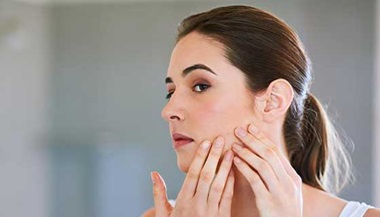Dermabrasion and Dermaplaning
What is dermabrasion?
Similar to a chemical peel, dermabrasion is a procedure that resurfaces your skin and removes fine wrinkles and minimizes scars on the skin. The difference between a chemical peel and dermabrasion, however, is the method used. Dermabrasion involves the surgeon using a high speed rotating brush to manually remove the top layer of skin. The size and depth of the scars, as well as the degree of wrinkling, determine the appropriate level of skin that will be surgically sloughed.
Possible complications of dermabrasion
Possible complications of dermabrasion may include:
-
Fever blisters. Dermabrasion can cause fever blisters to reappear in those who are prone to frequent herpes simplex infections. Antiviral medicines are often used to treat this symptom. You may be given them before your treatment.
-
Pigmentation changes. Some people may develop a change in the pigmentation (coloration) of their skin after undergoing the procedure. Treatment for this symptom may include the use of bleaching creams, as prescribed by a doctor. A decrease in pigmentation can be permanent.
-
Thickened skin. Thickening of the skin can develop. This symptom may be treated with cortisone creams or injections which help the skin return to its normal state.
What is dermaplaning?
Dermaplaning is used to treat deep acne scars with a hand-held instrument called a dermatome. The dermatome looks like an electric razor and has an oscillating blade that moves back and forth to evenly "skim" off the surface layers of skin that surround the craters, or other facial defects.
Both dermabrasion and dermaplaning can be done on small areas of skin, or on the entire face. They can be used alone, or with other procedures. Neither treatment, however, will remove all scars and flaws, or prevent aging.
Who can benefit from dermabrasion or dermaplaning?
Men and women of all ages can benefit from dermabrasion and dermaplaning. Important factors that help to determine the effectiveness of both treatments include the following:
-
Skin type
-
Skin coloring
-
Medical history
About the procedure
Although each procedure varies, dermabrasion and dermaplaning surgeries generally cover the following considerations:
Where the procedure may be done
-
Surgeon's office-based surgical facility
-
Outpatient surgery center
-
Hospital outpatient
-
Hospital inpatient
Anesthesia options may include:
-
Local anesthesia, combined with a sedative (allows the patient to remain awake but relaxed)
-
A numbing spray may be used along with or instead of local anesthesia
-
General anesthesia
How long does it take?
-
From a few minutes to an hour or more, depending on the size of the area of skin to be refinished. The procedure may be done more than once, or in stages.
Some possible short-term side effects of surgery
-
The skin may be red and swollen. It may appear scraped for several days.
-
Eating and talking may be difficult for a few days after the procedure.
-
Tingling, burning, or aching may occur.
-
Swelling and scabbing may occur.
As the new skin begins to grow, it may appear and feel swollen. The skin may also be sensitive and bright pink in color, which may take about 3 months to fade. Protection from the sun is very important following this type of procedure.





